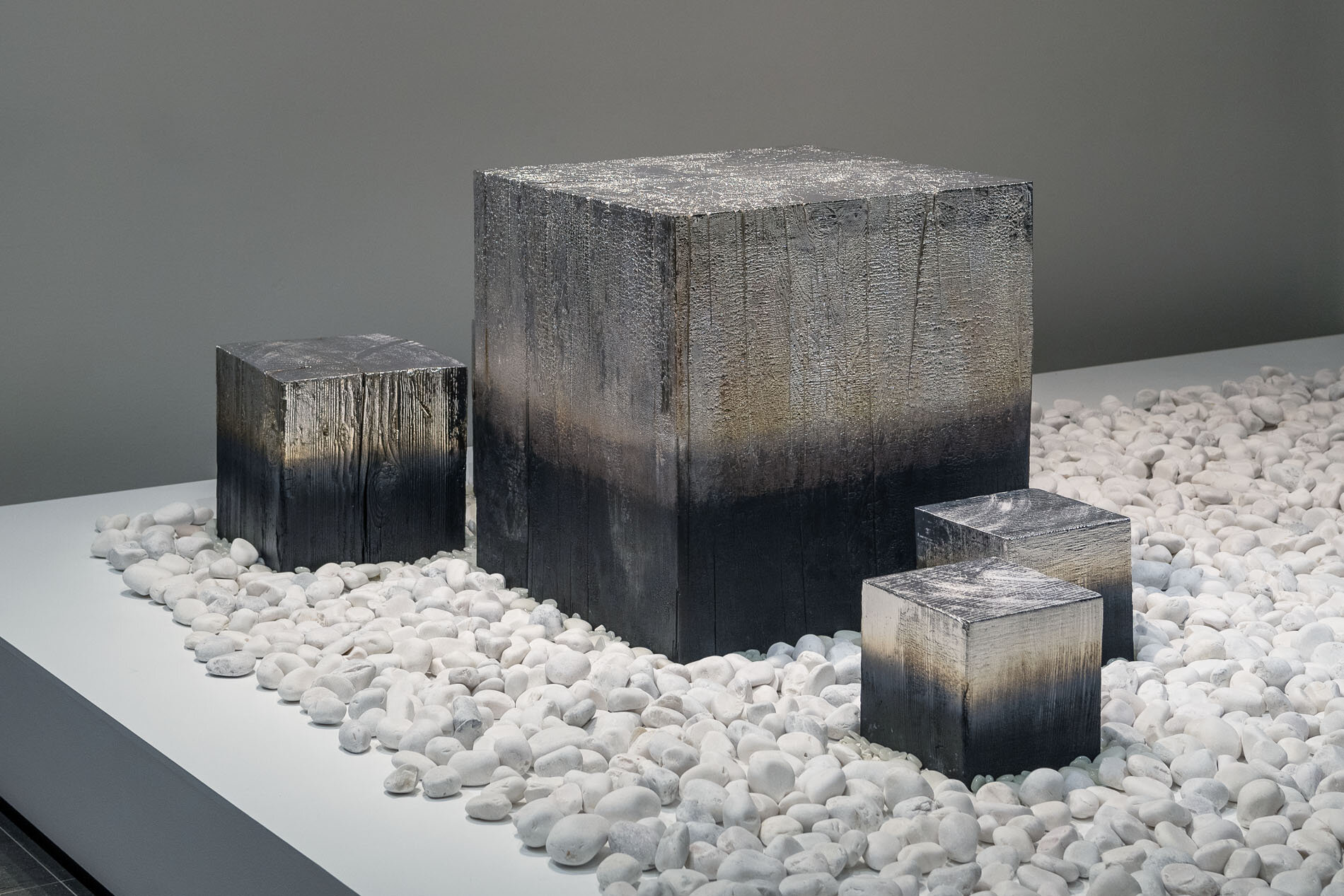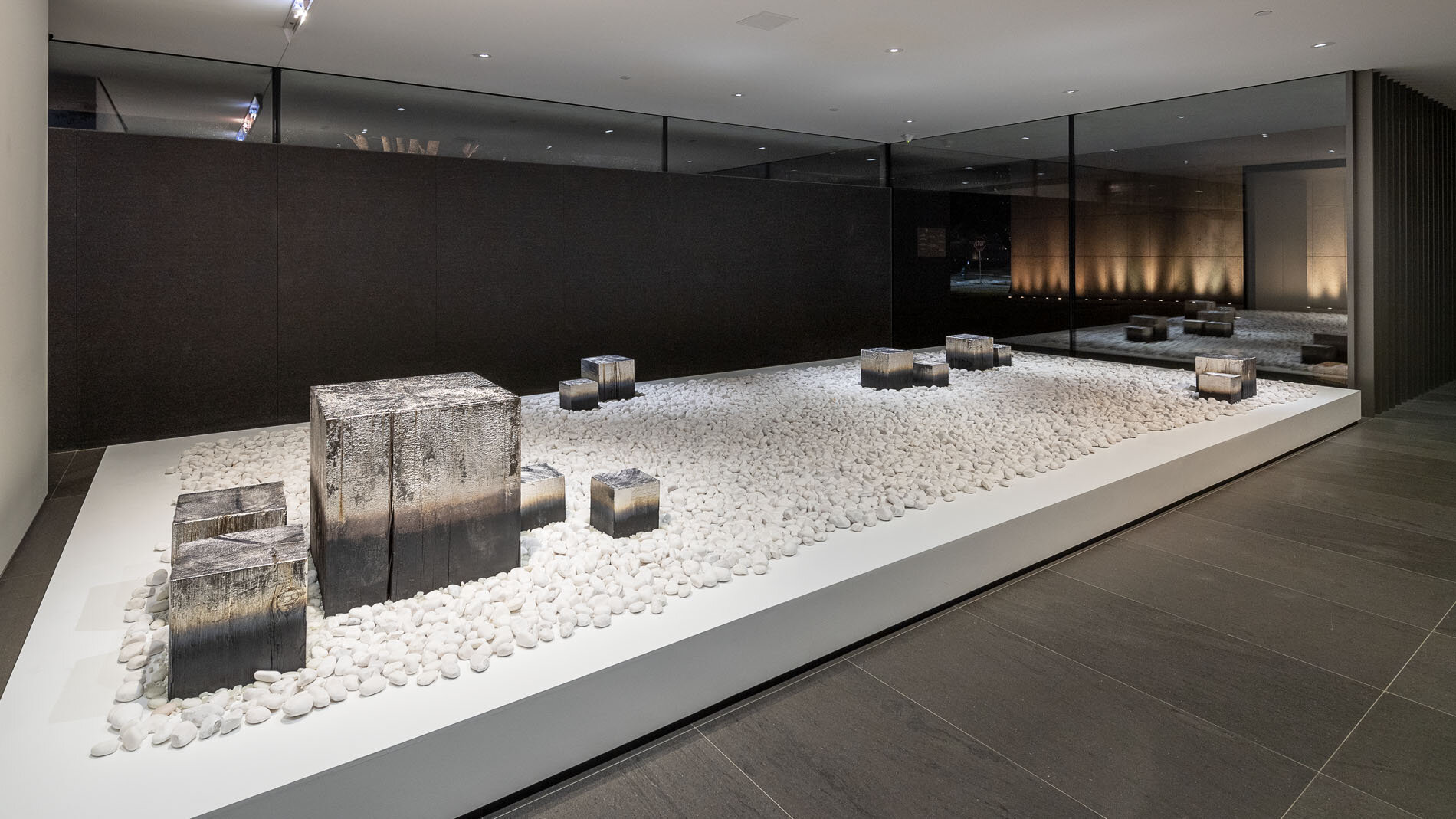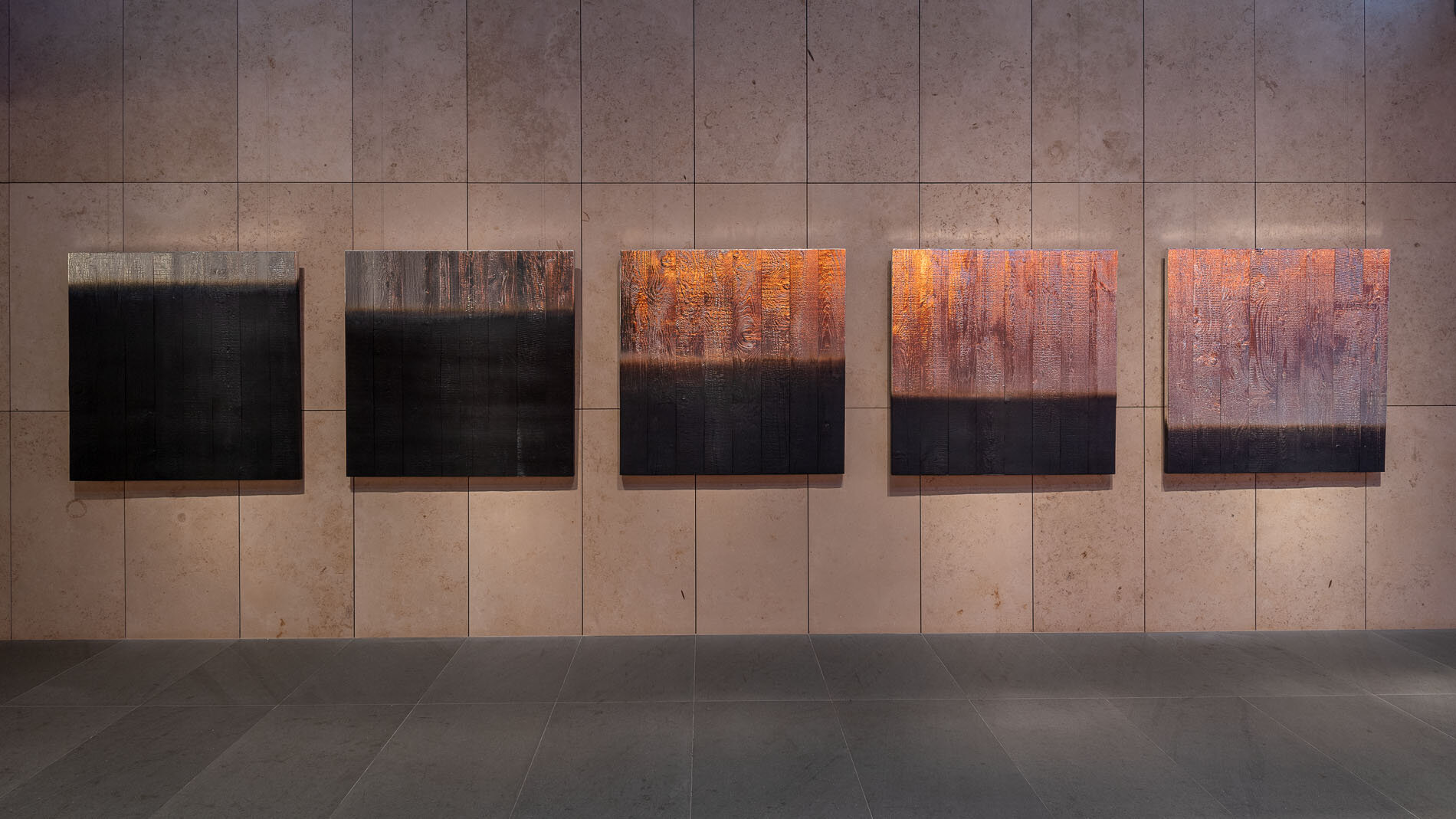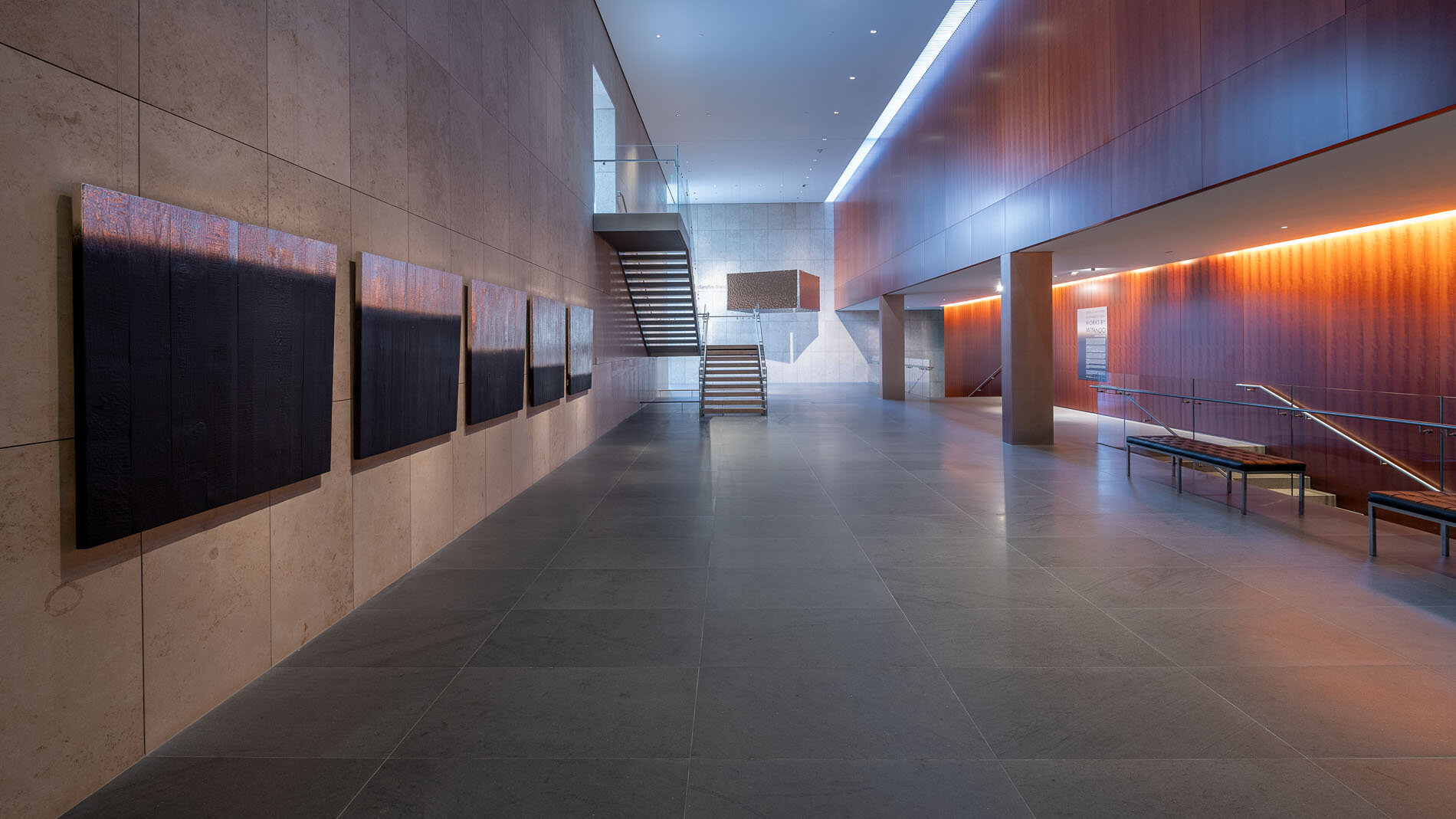





ASIA SOCIETY TEXAS CENTER, HOUSTON, TEXAS
FORM IS EMPTINESS, EMPTINESS IS FORM
(Solo Exhibition: Curated by Bridget Bray)
NOVEMBER 16, 2019 - MARCH 20, 2020
Form is Emptiness, Emptiness is Form, curated by Bridget Bray at Asia Society Texas Center, introduces Miya Ando’s work to Texas audiences through a powerful exploration of impermanence, transformation, and philosophical depth. Taking its title from the Heart Sutra, a foundational Mahāyāna Buddhist text, the exhibition unfolds across the Grand Hall, North Gallery, and exterior of the Louisa Sarofim Gallery in direct dialogue with Yoshio Taniguchi’s architecture. Central to the installation is a reimagining of the Ryōanji rock garden—one of Japan’s most iconic expressions of Zen aesthetics—realized through a field of charred shou sugi ban wood cubes. Each cube is a meditation on time and elemental transformation, its surface blackened by fire in a traditional Japanese preservation technique. By transposing Ryōanji’s visual grammar from stone to wood, Ando offers not a literal reconstruction but an evocation—one that replaces permanence with fragility, stone with organic matter, inviting viewers into a spatial koan. This transformation reflects the Heart Sutra’s core insight: that form and emptiness are not opposites, but reflections of the same reality.
Ando’s work speaks fluidly across both Eastern and Western art canons. Her use of industrial materials and reductive forms finds resonance with Western Minimalism and postwar abstraction, yet her intent diverges: her compositions are not formal exercises but ontological inquiries. Where Western traditions have often pursued permanence, monumentality, or autonomy, Ando introduces impermanence, humility, and interdependence. The charred wood of the Ryōanji field carries memory—not only of fire, but of centuries of Zen thought and practice. In this, she continues the legacy of Ryōanji itself, a site of contemplation where absence is more expressive than presence, and where meaning emerges from silence and spacing. Bray’s curatorial approach foregrounds this interstitial logic, allowing the works to speak without overdetermination. In Form is Emptiness, Emptiness is Form, the exhibition becomes a space for deep reflection—where Buddhist philosophy, material transfiguration, and the language of global contemporary art meet. Ando’s Ryōanji is not fixed in stone, but alive in change, asking us not what we see, but how we see it—and what disappears as we do.
MORE INFO